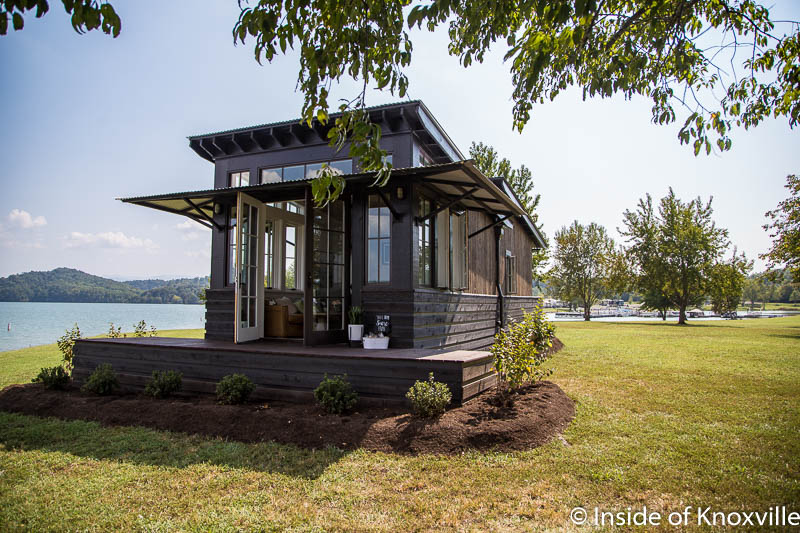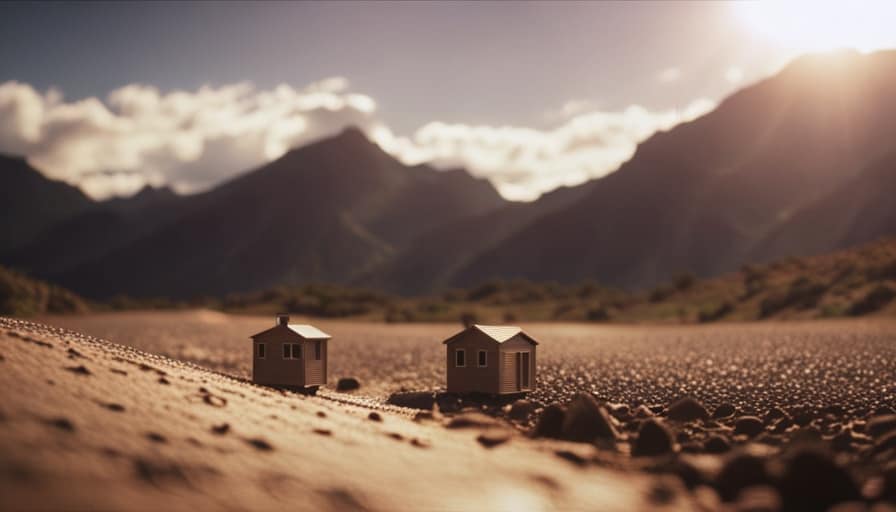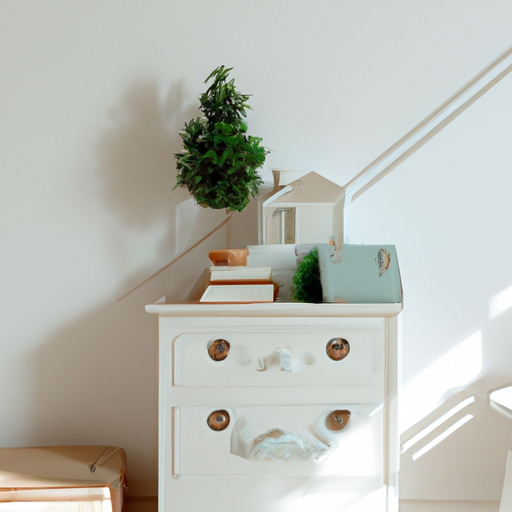As a resident of a small house, I understand the obstacles of maintaining a well-functioning home.
One of the biggest concerns during the winter months is preventing pipes from freezing. It’s a common issue that can lead to costly repairs and inconvenience.
But fear not, because I’ve got some practical tips and techniques to share with you. By understanding the risks, insulating properly, and implementing heating solutions, we can safeguard our plumbing systems and enjoy a worry-free winter.
Key Takeaways
- Insulating the pipes and the tiny house is crucial to prevent freezing.
- Portable heaters strategically placed near pipes provide localized heat.
- Insulating exposed pipes with foam insulation sleeves or heat tape prevents freezing.
- Acting quickly is crucial to prevent further damage when dealing with frozen pipes.
Understanding the Risks: Why Do Pipes Freeze in Tiny Houses
As a tiny house owner, I need to understand why pipes freeze in my tiny house. There are several risks associated with frozen pipes, including water damage, burst pipes, and costly repairs. Understanding the causes and prevention methods is crucial to avoid these issues.

The main cause of frozen pipes is exposure to extreme cold temperatures. When the temperature drops below freezing, the water inside the pipes can freeze, causing them to expand and potentially burst. To prevent this, it’s important to insulate the pipes properly and ensure the tiny house is well-insulated overall.
Additionally, you can use heat tape or a space heater in areas where pipes are vulnerable to freezing. Regularly checking for leaks and maintaining a consistent temperature inside the tiny house can also help prevent frozen pipes.
Insulation Techniques: How to Keep Your Pipes Warm
Luckily, there are several insulation techniques that can help me keep my pipes warm in my tiny house. Here are three effective methods to consider:
-
Pipe insulation: Insulating the pipes is a crucial step in preventing freezing. Foam pipe insulation is affordable and easy to install. It acts as a barrier, keeping the heat inside the pipes and protecting them from the cold.

-
Heat tape: Heat tape is another excellent option for keeping pipes warm. It’s a flexible heating element that wraps around the pipes. The tape is self-regulating, meaning it adjusts its heat output based on the pipe’s temperature. It provides consistent warmth and prevents freezing.
-
Sealing gaps and cracks: Insulation alone may not be enough if there are gaps or cracks in the walls or floors. Seal these openings with caulk or weatherstripping to minimize cold air infiltration and maintain a warmer environment for your pipes.
Heating Solutions: Options to Safeguard Your Plumbing System
I have several heating solutions and options to safeguard my plumbing system in my tiny house.
One option is to use portable heaters strategically placed near the pipes to provide localized heat. These heaters are a convenient and cost-effective way to prevent freezing.

Another option is to use heat tape, which is an electrical heating element that can be wrapped around the pipes. Heat tape provides constant heat to keep the pipes warm and prevent freezing. It’s essential to follow the manufacturer’s instructions carefully when using heat tape to ensure its proper installation and operation.
Winter Maintenance: Steps to Take Before the Cold Sets In
Before the cold sets in, it’s important to prepare my tiny house by taking specific steps to ensure winter maintenance. Here are three key steps to prevent leaks and water damage:
-
Insulate pipes: To prevent freezing, I’ll insulate all exposed pipes with foam insulation sleeves or heat tape. This will help maintain a consistent temperature and reduce the risk of pipe bursts.
-
Seal gaps and cracks: I’ll carefully inspect the exterior of my tiny house for any gaps or cracks that could allow cold air to enter. By sealing these areas with weatherstripping or caulk, I can prevent drafts and keep the interior warmer.

-
Clean gutters: Before winter arrives, I’ll clean out my gutters to ensure proper water drainage. This will prevent ice dams from forming and potential water damage to the roof or walls.
Emergency Preparedness: What to Do If Your Pipes Freeze
If my pipes freeze, it’s important to act quickly in order to prevent further damage. The first step is to identify the signs of frozen pipes. Some common signs include little to no water flow from faucets, strange noises or banging coming from the pipes, and visible frost or ice on the pipes.
Once you’ve confirmed that your pipes are frozen, it’s time to thaw them out. There are a few thawing methods you can try. One method is to use a hairdryer or heat gun to apply gentle heat to the frozen section of the pipe. Another method is to wrap the pipe with towels soaked in hot water. You can also use a heating pad or electric blanket to warm the pipes.
Whichever method you choose, remember to open all faucets to relieve any pressure and allow the water to flow once the pipes thaw.

Frequently Asked Questions
How Much Does It Cost to Insulate the Pipes in a Tiny House?
Insulating pipes in a tiny house can vary in cost depending on whether you hire professionals or opt for DIY methods. Professional installation can be pricey, but there are affordable and effective DIY insulation options available.
Can I Use a Space Heater to Prevent My Pipes From Freezing?
Using a space heater is one way to prevent frozen pipes in a tiny house. However, it’s important to consider alternative methods such as insulating pipes, using heat tape, and keeping cabinets open to allow warm air circulation.
Are There Any Specific Brands or Types of Insulation That Are Recommended for Tiny House Plumbing?
There are various insulation brands and types that are recommended for tiny house plumbing. It’s important to choose insulation that is specifically designed for pipes and can withstand cold temperatures to prevent freezing.
Should I Leave the Faucets Dripping Overnight to Prevent Freezing?
I should definitely use heat tape to prevent freezing. It is necessary to insulate the entire plumbing system in my tiny house. Leaving the faucets dripping overnight can also help prevent freezing.

What Are the Signs That My Pipes May Be Frozen in a Tiny House?
If your pipes in a tiny house freeze, signs may include no running water, strange noises, or visible frost. To thaw them, try using a hairdryer or wrapping them in warm towels.
Conclusion
In conclusion, taking the necessary steps to prevent frozen pipes in your tiny house is crucial in keeping your plumbing system intact during the cold winter months.
By understanding the risks, insulating properly, utilizing heating solutions, conducting winter maintenance, and being prepared for emergencies, you can ensure that your pipes stay warm and functional.
Don’t let the cold freeze your dreams, take action now and protect your tiny home from the icy grip of winter.

I’m Theodore, and I love tiny houses. In fact, I’m the author of Tiny House 43, a book about tiny houses that are also tree houses. I think they’re magical places where imaginations can run wild and adventures are just waiting to happen.
While tree houses are often associated with childhood, they can be the perfect adult retreat. They offer a cozy space to relax and unwind, surrounded by nature. And since they’re typically built on stilts or raised platforms, they offer stunning views that traditional homes simply can’t match.
If you’re looking for a unique and romantic getaway, a tree house tiny house might just be the perfect option.










